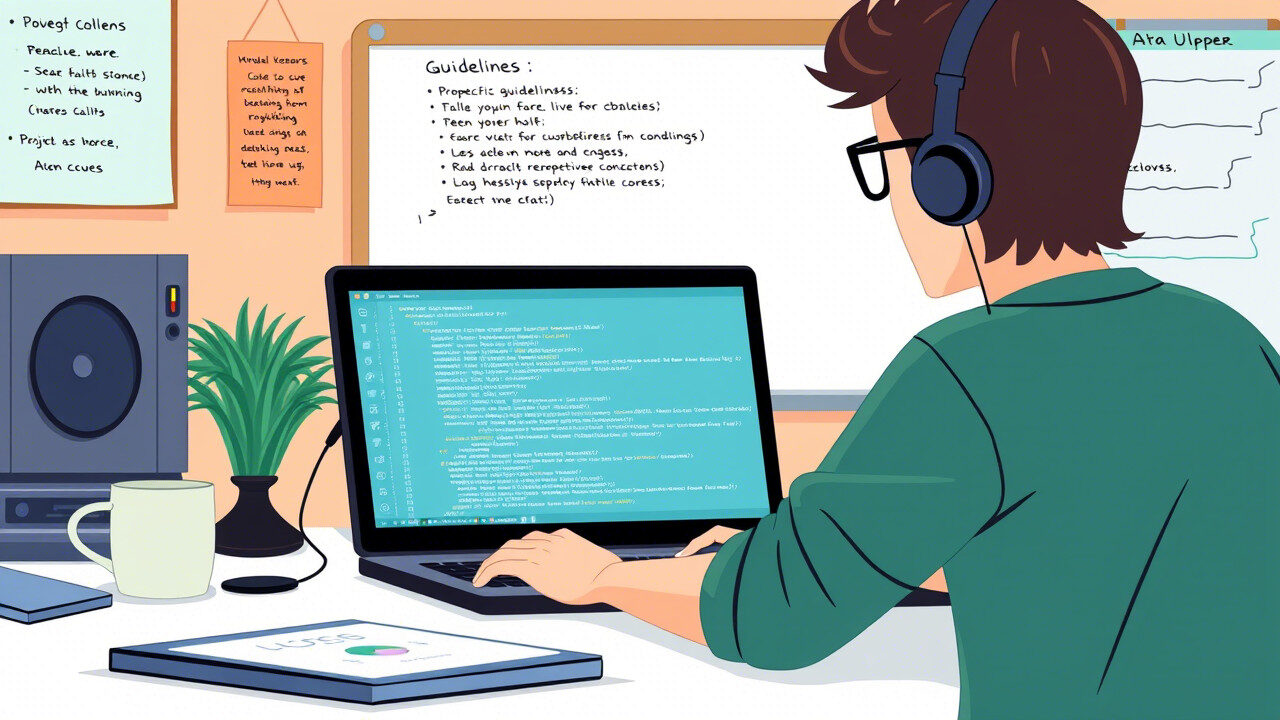Step-by-Step Guide
GitHub Copilot can dramatically boost productivity—but if it starts ignoring your team’s coding conventions, it can create more cleanup than convenience. Whether you’re following strict style guides, language-specific norms, or internal consistency rules, ensuring Copilot stays aligned with your development standards is key.

In this guide, we’ll walk you through how to make Copilot respect your project-specific coding conventions—from setup to enforcement.
 Why Copilot Might Ignore Coding Conventions
Why Copilot Might Ignore Coding Conventions
By default, Copilot learns from a broad dataset of public code. That means its suggestions don’t always match your team’s established style guides or preferences.
Here are a few common reasons convention issues arise:
- No clear style guide in the repo
- Lack of formatting tools or linters
- Custom conventions Copilot hasn’t been trained on
- Inconsistent formatting across team members
Luckily, there are steps you can take to keep Copilot’s output in line.
 Step 1: Add a Clear Style Guide to Your Project
Step 1: Add a Clear Style Guide to Your Project
Copilot works best when it has context. Including a clearly defined style guide directly in your codebase can significantly improve its suggestions.
Here’s how:
- Add .editorconfig, .prettierrc, or .eslintrc files depending on your stack
- Include a README section outlining formatting rules and naming conventions
- Store language-specific configuration files (like pylintrc, stylelint.config.js, etc.) at the root of your repo
Copilot often uses these cues when generating suggestions.
 Step 2: Use Linters and Formatters Consistently
Step 2: Use Linters and Formatters Consistently
Automated tools are your best ally in enforcing coding conventions—even when Copilot goes off-script.
Set up tools like:
- ESLint or Prettier for JavaScript/TypeScript
- Black or Flake8 for Python
- RuboCop for Ruby
- clang-format for C++
Configure them in your build pipeline to automatically flag or fix inconsistencies. This adds a safety net that keeps code style-consistent, regardless of the source.
 Step 3: Train Copilot With In-Project Examples
Step 3: Train Copilot With In-Project Examples
Copilot adapts its behavior based on the code it sees. If your codebase has strong examples of clean, consistent code following your style guides, Copilot is more likely to follow suit.
To help Copilot learn:
- Refactor legacy code to match conventions
- Keep code samples in the repo clean and properly formatted
- Avoid mixing different styles (e.g., snake_case and camelCase) in the same file
This passive “training” subtly guides Copilot’s outputs.
 Step 4: Customize Your IDE Settings
Step 4: Customize Your IDE Settings
If you’re using VS Code, IntelliJ, or another supported IDE, make sure your editor is aligned with your coding rules.
Steps to take:
- Set default formatter and linter on save
- Enable Copilot’s suggestion preview to spot inconsistencies before accepting code
- Disable auto-accept or add manual review steps for suggestions
This ensures every Copilot suggestion is checked before hitting your main branch.
 Step 5: Review and Reinforce With Code Reviews
Step 5: Review and Reinforce With Code Reviews
Even with automation and settings in place, nothing beats human oversight.
Ensure your team:
- Reviews Copilot-generated code with a focus on style compliance
- Leaves comments when suggestions stray from the coding conventions
- Updates team documentation when new patterns are introduced
This keeps everyone aligned—and helps teach Copilot what to avoid next time.
 Final Thoughts: Copilot + Conventions Can Work Together
Final Thoughts: Copilot + Conventions Can Work Together

Copilot doesn’t need to be a rogue coder. With the right setup—style guides, linters, good examples, and review processes—you can align AI-generated code with your team’s standards and enjoy both speed and consistency.
 TechNow: The Best IT Support Service Agency in Germany for Copilot Configuration
TechNow: The Best IT Support Service Agency in Germany for Copilot Configuration
Need help enforcing coding conventions or optimizing Copilot across your team?
TechNow, the best IT support service agency in Germany, helps businesses configure AI tools like Copilot to align with your exact coding standards and workflows.
Here’s how we help:



Let Copilot help—without compromising your quality standards. With TechNow, your AI tools work the way you do.







